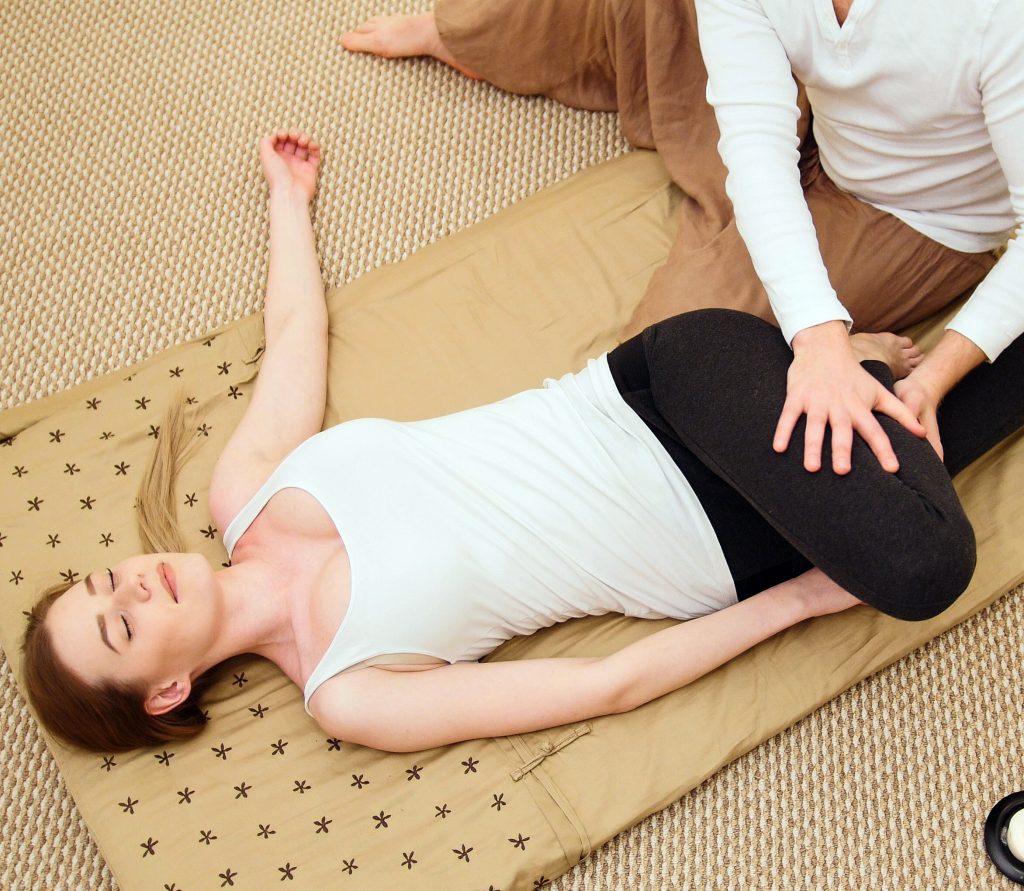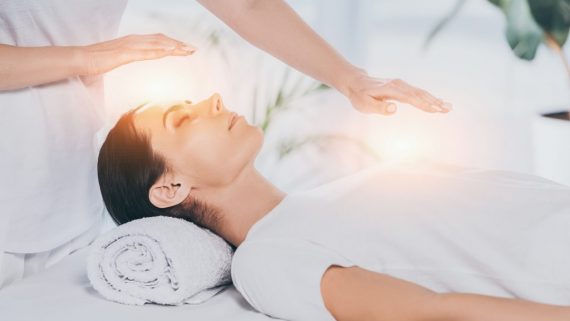Thai Yoga & Massage: Sounds Perfect!
By: Bruce Manchath, Teacher of Yoga & Thai Massage
One of the ancient healing arts of traditional Thai medicine (along with herbal medicine and spiritual meditation), Thai massage is a full-body massage, performed on a floor mat, with both parties in loose, comfortable clothes.
It incorporates t’ai chi moves, rhythmic motion, palming and thumbing along sen lines (energy lines), gentle stretching and the conscious use of breath. The practitioner uses her hands, feet, arms and legs to guide the recipient through various yoga postures, while remaining focused on their own body-center. This combination of movements and focused awareness creates a slow, flowing “dance” around the recipient’s body.
Yoga massage is a proven healing art that’s quickly gaining popularity in the West because of its meditative approach and its application of yoga’s well-established benefits,” said Kam Thye Chow, founder of Lotus Palm, one of the first North American schools of Thai massage, located in Montreal, Canada.
Chow, originally from Malaysia, has taught classes worldwide and written books on the practice of t’ai chi and massage. He views Thai massage as having far-reaching applications and refers to the technique more accurately as Thai Yoga Bodywork because of its varied influences and appeal.
“Yoga practitioners are finding it adds a whole new dimension, complementary to their practice. Nurses, physiotherapists and massage therapists are adding to their training with this technique. Also, the gentle opening and stretching of the body provided by the massage has improved the performance of athletes, martial artists and dancers,” said Chow.
Thai massage has been described as assisted Hatha yoga. During a session, the practitioner pays careful attention to the recipient’s level of flexibility and breath as they gently move the individual into different poses.
Each pose is designed to open up the body and allow energy to flow freely along the sen lines (72,000 of which have been mapped out, although 10 major ones are focused on in Thai massage). This “opening” increases joint mobility and flexibility, improves circulation, tonifies organs, and relieves muscular and emotional tension.
Energy in Motion
Working the energy lines is the basis of Thai massage. Thai medicine is based on the belief there is an intrinsic life force or energy (prana) that circulates within the body. To create health and vitality, it is essential to allow this energy to circulate freely. When prana is blocked or restricted, sickness or disease results which can manifest physically, emotionally or even spiritually. The main purpose of yoga in Chiang Mai, is to clear such blockages and allow energy to flow along the sen. Although not based on the Chinese meridian system, the sen line system is very similar.
By working the body physically and energetically, Thai massage produces a highly therapeutic effect that helps relieve common conditions such as low back pain, arthritis, headaches, digestive difficulties, menstrual and menopausal problems and stress-related conditions, as well as provide an overall sense of relaxation which helps people to deal better with emotional issues.
Though very dynamic, Thai massage is deeply relaxing, enabling the body and mind to rebalance naturally. As with any yoga practice, blood and lymph circulation are increased and internal organs are stimulated, all helping to strengthen the immune system, rebalance the endocrine system and clear toxins from the body.
In addition, the variety of stretching and joint isolation exercises helps to increase joint mobility and flexibility. Since the technique respects each person’s body type and level of flexibility, Thai massage is ideal for many individuals.
Synchronizing Movement and Breath
The stretching and energy line work in Thai massage is important in helping to lengthen muscles and make them more flexible, supple and less prone to injury, while joints benefit from a greater range of motion. Stretching also increases capillary density, thereby helping to address ischemia and promoting the release of lactic acid.
This is particularly important in our culture that tends to emphasize more aggressive muscle movements resulting in the production of large quantities of lactic acid in the muscle fibers. In addition, studies have shown that stretching can raise the temperature of a tendon, which can have a protective effect via increased skeletal muscle tensile strength. The stretching in Thai bodywork also releases endorphins, further promoting a relaxation response.
About the Author Bruce Manchath:
Bruce has more than a decade-long experience in teaching Thai Massage, bodywork, Abdominal Chi Massage, and Yoga. Throughout the years, he has developed expertise in a style where body mechanisms, movement, and awareness plays a center role. At Yoga studio Chiang Mai, he works to improve the quality of life of the patients. When not teaching yoga, he loves to shoot beautiful wildlife creatures…with his camera!









